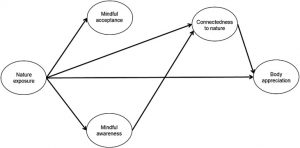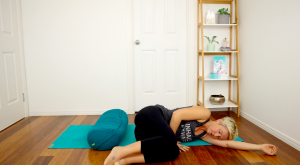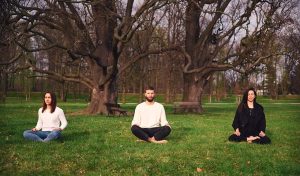
The Psychology of Ending Suffering
By John M. de Castro, Ph.D.
“Pain is inevitable, but suffering is optional.” – anonymous
The Buddha taught that every one of us is already enlightened We simply need to remove those things that are preventing us from realizing our true nature, and those things are our sufferings. But suffering unsatisfactoriness is rampant in our daily lives. But these unsatisfactorinesses have causes and by eliminating the causes of unsatisfactoriness we can bring about equanimity and happiness. The Buddha and his followers have developed many methods for eliminating unsatisfactoriness and many of them are identical to the teachings of modern Psychology on how to eliminate unwanted behaviors.
The usual way most people tend to think about stopping a behavior is to punish it. This is the ubiquitous solution in our society, particularly exemplified by our treatment of criminal behavior. But we do it also at work. B. F. Skinner analyzed the work environment as dominated by punishers and the avoidance of punishers. He taught that the salary that is earned sets up a lifestyle and we become reliant upon the income to support it. Behavior at work is then controlled by threatening to withdraw this lifestyle, e.g. threat of firing or layoff, lack of raises or promotions, etc. But, psychological research has clearly shown that for the most part, punishment is ineffective in removing unwanted behaviors. Instead, it at best temporarily suppresses behaviors that can reemerge at any time or it leads to the individual avoiding the punisher, the supervisor, the police, or often parents and teachers.
The frequent use of punishment is apparent in our contemplative practice, where we frequently punish ourselves for not being or doing what we think we should be. We get angry at ourselves when we fail at quieting our mind in meditation. We get upset at ourselves when our mind wanders. We feel ashamed when we let our desires control our behavior. We feel bad when we see how we’re constantly wanting things in our lives to be different than they are. But, these punishers, like those in society are ineffective. Instead of improving our practice, they can lead to our avoiding or abandoning the practice.
But, the science of Psychology has a lot to offer in place of punishment in our quest to end unsatisfactoriness. Much has been learned through the years of research of how things are learned and unlearned and how to change behaviors. One of the key notions in Psychology is known as Thorndike’s Law of Effect. Simply stated it teaches that when we do things that lead to a pleasant state of affairs, we tend to repeat them while those that lead to an unpleasant state of affairs tend to become less likely to be repeated. This simple, seemingly obvious principle is actually quite powerful and suggests how we should proceed.
As we’ve discussed, applying unpleasant states, punishment, is not generally effective. Note, the Law of Effect states that we tend not to repeat behaviors that lead to an unpleasant state of affairs. So, if our contemplative or spiritual practice leads to self-punishments, it doesn’t lead to better practice, rather it leads to our becoming less likely to practice. This is the exact opposite of what we want to happen. So punishing ourselves for our failures in practice, instead of correcting them, leads to less practice.
All of this is also true in our everyday lives. Punishing our boss by getting angry at him or her is likely not going to change his or her behavior, except maybe to prompt the boss to punish us. Honking, making obscene gestures, or tailgating a driver who cuts us off is unlikely to make the driver stop cutting people off. Rather it’s likely to anger the driver and make for a more dangerous driving situation. Yelling at your life’s partner when he or she does something that we don’t approve of is more likely to sour our relationships than change our partners’ behavior. Telling people whose political opinions vary from our own that they’re stupid or ignorant, is not likely to change their opinions, but rather to cause them to avoid talking politics with us in the future. Getting upset at ourselves when we’re not as fast, adept, or as effective as we want to be in our exercises, is unlikely to make us faster or more adept or effective, but rather to make it less likely that we’ll engage in exercise in the future. In a nutshell, punishment doesn’t work to change behaviors in our lives. So, it is unlikely to work in helping us eliminate our unsatisfactorinesses and remove the obstacles toward spiritual realization. We need to find another way.
The Law of Effect, though, does provide a powerful prescription for changing behavior. If you want to change a behavior you need to remove what is reinforcing or supporting it. Discover the pleasant state of affairs that is produced by the behavior and eliminate it and the behavior will gradually go away. This is a process called extinction and it is very effective in eliminating unwanted behaviors. So, in our practice, if we want to reduce mind wandering, then we just simply watch it, not punishing it nor giving it any energy. Slowly mind wandering will go through extinction, becoming less frequent. It will sometimes happen so slowly that you won’t notice its changing, but it will inevitably slowly dissipate.
While driving a car, we may want to decrease our impatience with traffic and stop lights. We should first look at removing what’s supporting it and that means reflecting on the impatience to investigate why we feel that way. We may be able to see that it’s supported by the idea that getting somewhere else will make us happy. The thought of it reinforces the desire to get there quickly. But, we should remember that in the past whenever we got to that next place it didn’t make us happy. So, we again became impatient to get to another somewhere else where we feel we’ll really be happy. Hopefully, we can see our delusion that happiness is elsewhere is supporting our impatience. Recognizing this, each time we sense ourselves becoming impatient we bring this thought to mind that where we’re going will not necessarily make us happy, we can only be happy in the present moment. This can begin to extinguish the impatience. There’s no need to be impatient as it’s not going to get us what we want. So, impatience slowly lessens and becomes less frequent. We’ve eliminated a suffering by removing its cause. We’ve extinguished it.
There’s a problem with extinction that modern Psychology has discovered and that is over a period of time the lost behavior can reemerge. This is called spontaneous recovery. To overcome this the behavior must be extinguished again and if spontaneous recovery occurs again, it must be again extinguished. So, patience and persistence must be practiced. Eventually, the behavior will cease and no spontaneous recovery will happen again. So, if impatience while driving occurs again, we need to repeat our extinction process until we stop impatience completely and simply enjoy the present moment.
Psychology has also discovered that learning in one situation will generalize to other similar situations. This can be quite helpful as what we learn is not just effective in the exact circumstances in which we learned it. As a result, if we extinguish impatience while driving we’ll tend to have less impatience at work, with our life partner, with political discussions, and with exercise. Impatience will still be there in these other situations but the generalization from driving results in a lessening in its intensity. Impatience then becomes easier to extinguish in these other situations. If we go through the process we used with driving with our impatience with work and extinguish it, it will also generalize producing a further reduction in impatience with our life partner, with political discussions, and with exercise. Continuing this process will make us much more patient and happier people in virtually every circumstance.
Another method that Psychology has developed for eliminating an unwanted behavior is to replace it with an incompatible behavior. This is called counterconditioning. In this process positive reinforcement, reward, is used to build up a behavior that cannot coexist with the behavior we wish to eliminate. For example, to eliminate a phobia to spiders, a psychologist may attempt to have the patient relax in the face of thinking about spiders, replacing fear with relaxation. Similarly, a child that is hyperactive and engages in problematic behaviors in the schoolroom can be rewarded for paying attention. Since, paying attention cannot occur at the same time as disruptive behaviors, strengthening attention, reduces disruptive behaviors.
For example, we may feel unhappy because our life’s partners have a habit of not picking up after themselves. This feeling of unsatisfactoriness can build up and produce a nasty outburst and upset our partner. But, if when confronted with the mess, we simply remember a wonderful endearing characteristic of our partner, we can begin to replace the unsatisfactoriness with pleasant thoughts. The good feelings then begin to replace the irritation toward our partners. If we continue this practice we will slowly begin to react to the mess with loving feelings and can then confront the behavior with kindness and love, making it more likely to have a positive effect on our partners lack of tidiness. This is the process of eliminating our unsatisfactoriness through counterconditioning. Tangible rewards are not available, but pleasant memories are, and they can be used to reinforce the incompatible behavior.
Positive Psychology has clearly shown that we can replace unsatisfactoriness by strengthening satisfactory states, such as happiness, contentment, joy, and bliss. By simply working to amplify the positive the negative declines. Simple things such as putting a smile on our faces, can brighten our day. Smiling at other people when we pass them in the corridors and streets not only lifts their spirits but also our own and a return smile amplifies the contentment even more. We become so much happier and more content when we focus on the good things in life rather than the bad. When we do, unsatisfactoriness fades away.
The great sage Thich Nhat Hahn teaches us to focus on our non-toothaches. When we have a toothache we’re miserable and suffering and find this very unsatisfactory. We think, if we can just get over this painful condition then things will be good again. But, once it’s gone, we quickly forget and focus on something else that’s unsatisfactory. We need instead to be happy that our teeth are sound, without pain. Simply notice it and rejoice in it. It is a simple miracle that our bodies work so well that we can enjoy great oral health. Simply, occasionally, reflect on our good health and the miracle of being alive with most everything working well. What a beautiful state! What a joy! How can we find our lives unsatisfactory when we appreciate all that is right with our lives.
Psychology has found that positive reinforcement is extraordinarily powerful in changing behavior. So, we should reward ourselves for making strides in our practice and in our lives, rather than punishing ourselves for our failures. During contemplative practice when our minds wander, we shouldn’t get upset that we lost focus, rather celebrate the fact that we returned to focus. When we realize that our mind is wandering we punish ourselves by getting upset with ourselves, what we are effectively doing is punishing returning to focus. As we’ve seen, this leads to making it less likely that we’ll return to focus in the future. But, if we rejoice when we realize our minds are wandering and congratulate ourselves for returning to focus, we increase the likelihood that the next time our minds wander we’ll be more likely to detect it and get back to focusing on our practice. This is far more satisfactory
The other day I was riding my bicycle and got extremely tired before completing my scheduled ride. So, I stopped and rested even though I only had a couple of miles to go. Rather than getting angry and upset at myself for not pacing my ride properly, I congratulated myself for knowing my body and recognizing that a rest was necessary. So, I replaced an unsatisfactory state of self-anger with a satisfactory state. Rather than suffer about my failure, I celebrated my good sense. So, use positive reinforcement and reduce unsatisfactoriness, building happy and satisfying states.
It’s useful in this regard to contemplate happiness. Look carefully at when we’re happy, joyful, or content look carefully at exactly what we’re feeling in our bodies. This will help us at becoming better at recognizing these positive states when they are present. When they are there investigate what were the conditions that led up to these good feelings and thereby begin to learn what really makes us happy. We’ll probably be surprised that it is mostly not what we think will make us happy, but often something simple and everyday, particularly with family and friends. Recognize what truly makes us happy, we can learn how to increase our happiness. Doing so markedly reduces unsatisfactoriness. So eliminate suffering by building happiness, joy, and contentment.
Sometimes our suffering is too strong to simply replace it. Psychology also has a method to use in this case. It’s a process of slowly replacing similar but less intense unsatisfactoriness with counterconditioning and letting it generalize to more intense situations that can now be addressed. This is called systematic desensitization.
We might try this with political discussion where the issues produce so much anger that trying to replace them with good feelings is almost impossible, perhaps discussing abortion. Instead, look for issues of discussion that are contentious but less emotional, perhaps taxes. First practice relaxing by taking a deep breath and focusing on relaxing the facial muscles and smiling. Once, we’ve developed this ability to evoke relaxation and a smile at will we can begin to apply it to replacing anger. After all, it’s impossible to be relaxed and smiling and angry at the same time. Now, we should try this while discussing taxes, while the other people are presenting their viewpoints, produce the relax and smile response and as we’re presenting our viewpoint also produce the relax and smile response. Slowly, anger will be replaced with pleasant feelings so while discussing taxes we are no longer angry.
Next, we move to a more contentious subject, perhaps welfare. The previous counterconditioning for the taxes discussion generalizes to the welfare discussion making it substantially less emotion provoking, so it can be more easily addressed. Then repeat the process of conditioning relaxation and smiling while the other people are presenting their viewpoints on welfare and as we’re presenting our viewpoint. Slowly, anger will be replaced with pleasant feelings so while discussing welfare we are no longer angry. The final step, after these and perhaps more intermediary steps, will be to repeat the process with the most anger producing discussion, perhaps abortion. The previous counterconditionings will have generalized to this discussion and the level of anger may be reduced to the point where it is manageable. We then repeat the process of strengthening the relaxation and smiling response while discussing abortion. Eventually, we’ll be able to take on the worst of the worst and do it while relaxing and smiling. Our unsatisfactoriness will have been eliminated by replacing it with a pleasant state.
These are some of the methods that Psychology has developed that can help us to eliminate our sufferings, unsatisfactorinesses. Applying extinction, counterconditioning, and systematic desensitization to our unsatisfactorinesses can be an effective means of getting rid of them. As we’ve discussed this is fundamental to unmasking our true nature, our Buddha Nature. So, the principles of modern Psychology can be useful tools on our contemplative and spiritual development. We can use the skills developed by following the principles of Psychology to eliminate our unsatisfactorinesses leading to spiritual awakening.
‘if we look deeply into such ways of life as Buddhism, we do not find either philosophy or religion as these are understood in the West. We find something more nearly resembling psychotherapy’. – Alan Watts
CMCS – Center for Mindfulness and Contemplative Studies
This and other Contemplative Studies posts are also available on Google+ https://plus.google.com/106784388191201299496/posts and on Twitter @MindfulResearch









